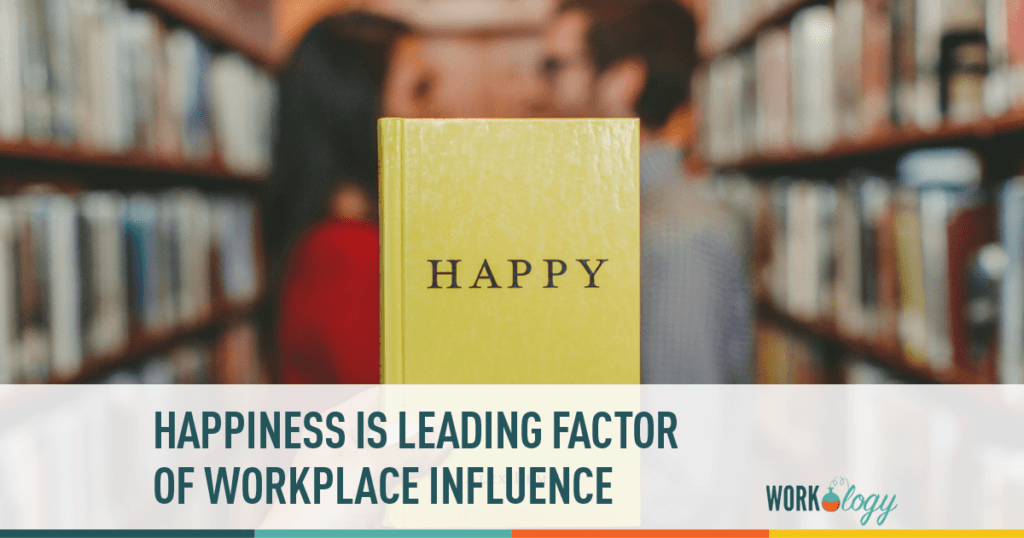This article is Part 4 of an ongoing series on influence in work, life, and the workplace. In Part 1, we discussed how someone is determined influential. In Part 2, the subject of online social media and influence was discussed and how it is tragically misunderstood. In Part 3, we discussed how and why to build professional influence.
How Happiness Impacts You at Work
Most people see being successful within their jobs, their careers, as being critical to successfully maintaining that which is important to them in life: healthy socioeconomic statuses. Several things comprise that status: family, relationships, faith, work, health, money, etc… but, according to the first World Happiness Report put together for the April 2012 UN’s “Conference on Happiness,” instability in our employment cause as much unhappiness as bereavement or separation. So we allow ourselves to be influenced by those that we believe will help us in our endeavors to maintain that stability. As it relates to influence, the key word is ‘allow.’ We must follow the directives of our superiors; which is why positional power that comes by “authority” only has just a marginal level of influence and limited effectiveness. When that influence level is reached, regardless of position; then those allowing themselves to be influenced have faith that following the influencer’s advice, agenda, or lead will help them achieve or maintain professional happiness in some manner.
How to Increase Employee Productivity and Influence
Asserting influence is not a passive thing just like driving employee productivity, however. Active tactics must be employed to allow influence to spread and promote environmental change, such as:
- Be Passionate. While an often, overused buzzword; true passion – confidence & enthusiasm around a belief or idea – is magnetic & attractive to those around you. People want to be led and it’s easier done by someone with that conviction.
- Give Reciprocal Credits. Also known as ‘bribery,’ ‘rewards & recognition’ this is one of the oldest methods of asserting influence. You do ‘X’ for me and I’ll do ‘Y’ for you. From leadership, that might be a public kudos or a bonus; from a peer, it might be a promise to cover a shift or put in a good word with the boss. This is most effective when you understand the order of their higher value system (what’s most important to them); so take the time to know that & work it into strategy.
- Find Common Ground. Helping others find points of commonality when there are disagreements, a knowledge gap to bridge, or opposing viewpoints is critical in asserting influence. This means you will need to help those involved frame an issue from a perspective that’s different than their own; but helps lead those involved to a solution that’s in keeping with the goals and practices of the Company.
- Establish a Healthy Sense of Urgency. Create a catalyst for change by presenting those you’re trying to influence with facts and data that create the reality that moving from the comfort zone they’re used to is better for them than continuing in the status quo. Fear is not the best motivator for this endeavor; show people how ‘the other side’ will be better for their happiness.
- Maintain Patience & Flexibility. While urgency is important, too often I work with people on change and influence strategies to find that someone in the leadership ranks lacks the patience necessary to maintain open-mindedness. Like a petulant child, they want what they want and they want it NOW… so why can’t people just get it done already?? It takes 30 days to create sustainable change in someone – it takes time to get people to mentally move from where they are to where you want them to be. Do yourself and your workforce a favor: don’t expect instantaneous results. Influence is lost when resolve is not kept.
- Put Others First. More than money and promotions, people want to believe that their coworkers & supervisors care about them. It is difficult, if not impossible, to trust those you believe doesn’t understand your needs or cares about your well-being. This requires regular interaction with those you’re trying to influence – allowing them to clearly see that you hear, understand, appreciate their obstacles, their contributions and include them in the formulation of your initiatives.
Driven by Love and Hope
When talking about this today, another leader & influencer in the recruiting industry, Glenda Smith (Principle at Pediatric Search Partners) contributed, “Freud says that happiness [in the individual] is ‘something to do, someone to love and something to hope for.” What a nice reminder. I submit this also makes an excellent roadmap for achieving and asserting influence at work.
In the next installment, we’ll look at how leaders can assert ‘indirect influence’ through activating “Power Influencers” within the Organization and/or in online communities.
This article is Part 4 of an ongoing series on influence in work, life, and the workplace. In Part 1, we discussed how someone is determined influential. In Part 2, the subject of online social media and influence was discussed and how it is tragically misunderstood. In Part 3, we discussed how and why to build professional influence.
Crystal Miller, known on Twitter as @theonecrystal is a builder of talent communities, addicted to Instagram, and avid social recruiter who also co-hosts a weekly radio show called #TalentNet. Visit her blog, TheOneCrystal.com to learn more.










One Comment
My spouse and i d like this Rss to search ahead of time to have looking at the fault like you have never the net promoters landscapes and that i ll simply a major web site
Comments are closed.